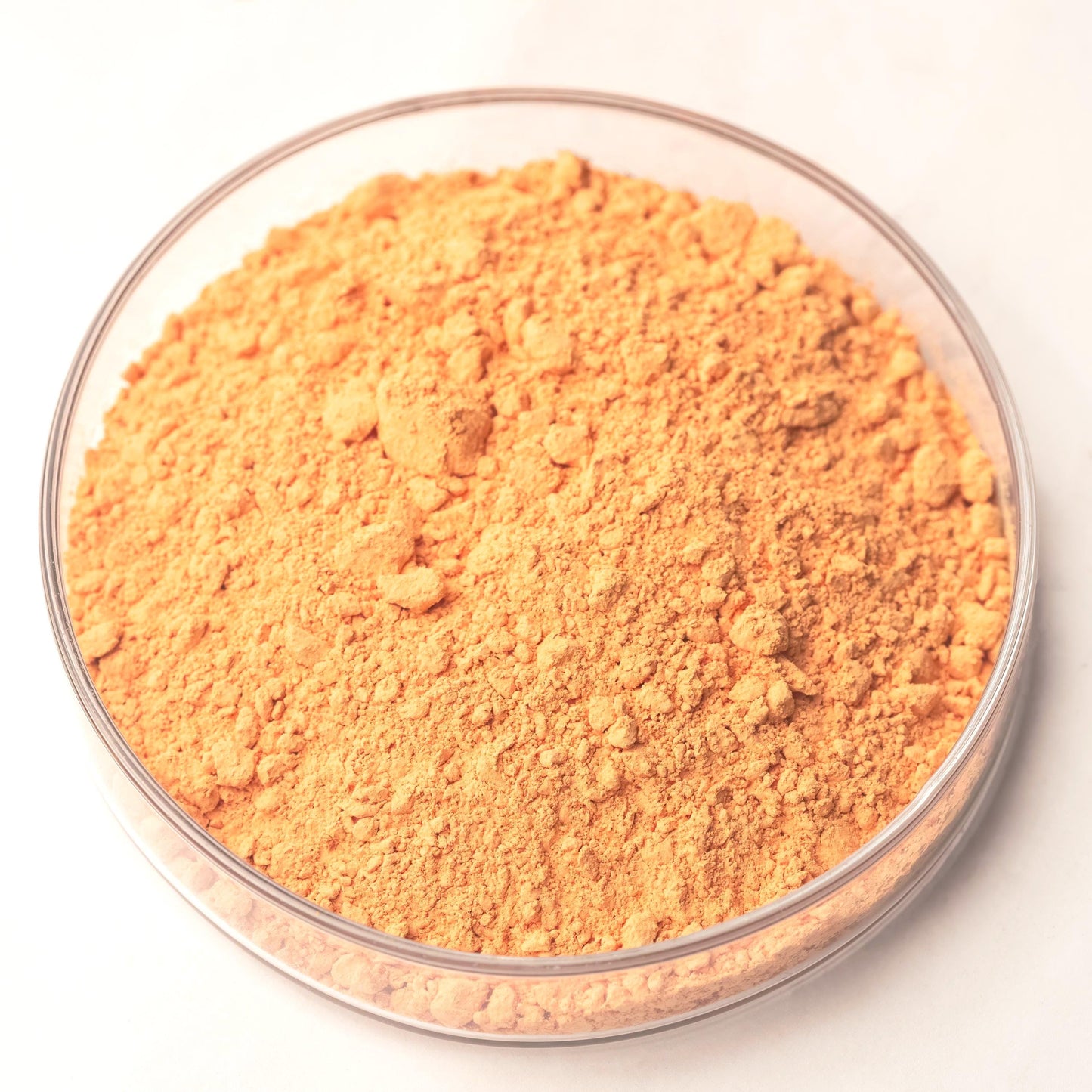Litharge Massicot
Litharge Massicot
Couldn't load pickup availability
Share

See Health Information
Description
Litharge is a heavy, opaque yellow-to-reddish pigment made from lead(II) oxide (PbO). Depending on the method of preparation, it can appear as a soft lemon-yellow or a deeper orange-red tone. It has been used since antiquity not only as a pigment but also as a key ingredient in glassmaking, ceramics, and in historical oil painting as a drier (accelerating drying times of oils).
As a pigment, litharge is opaque with strong covering power but limited tinting strength. In oil painting it was more often used in mediums than as a primary color, since it could affect drying and gloss.
History
Litharge has been known since ancient times, produced as a byproduct of refining silver and lead ores. The Greeks and Romans referred to it in alchemical and medical texts, using it both in pigments and cosmetics.
During the Middle Ages and Renaissance, litharge was employed in stained glass, ceramic glazes, and in making lead-based oil painting mediums. Painters would grind it into oils to create “litharge varnish,” a quick-drying, resinous medium. In manuscript and panel painting, it occasionally appears as a yellow or reddish pigment but was more often hidden within mediums rather than used directly.
Because of its high toxicity, litharge gradually fell out of common artistic use as safer yellows (like Naples Yellow and later cadmiums) became available. Today it is primarily of interest to conservators, pigment historians, and artisans reproducing historic painting methods.
Health and Safety
Warnings:
CANCER AGENT.
INHALATION MAY PRODUCE CANCER.
EXPOSURE MAY CAUSE HARM TO THE PREGNANT PEOPLE OR DEVELOPING FETUS.
INHALATION MAY CAUSE LUNG DAMAGE.
CONTAINS LEAD.
Precautions:
Keep out of reach of children and pets.
Do not consume.
Not for cosmetic or food usage.
Do not spray apply.
For further health information contact a poison control center.
Use care when handling dry pigments and avoid dust formation.
Use particular caution with fibrous, fine, or toxic pigments.
Do not eat, drink, or smoke near dry pigments.
Avoid breathing in pigment dust and use a NIOSH-certified dust respirator with sufficient rating for dry pigment.
Wash hands immediately after use or handling.
If dust is likely, always wear protective clothing to keep out of eyes, lungs, off skin, and out of any contact as well as keep area ventilated.
This product may contain chemicals known by the State of California to cause cancer, birth defects, or reproductive harm.
Warnings and bottle information are abbreviated.
Pigment Information
Pigment Type: Synthetic Inorganic (Lead Oxide)
Chemical Composition: PbO (Lead(II) Oxide)
Suitable Mediums: Oil (historically as a drier/medium), Tempera, Glass, Ceramics
Lightfastness: Excellent
Opacity: Opaque
Other Names: Lead Monoxide, Lithargyrum, Massicot (yellow form, uncalcined), Red Lead precursor
Color Index Code: PY46

